Polypterus senegalese: description and content in the aquarium
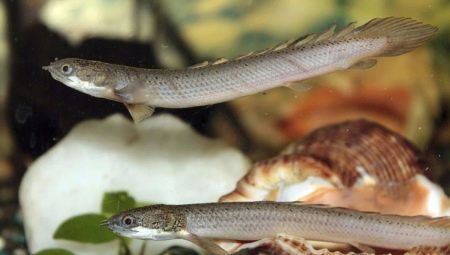
Currently, for most consumers, it is important to have an aquarium at home, and its inhabitants fade into the background. People are used to seeing a set of guppies, neons or goldfish in a typical home pond of 50-100 liters. And only a small number of aquarists choose to keep very unusual and rare fish with an interesting history. Such an ancient inhabitant as the Senegalese polypterus will be discussed in this article.
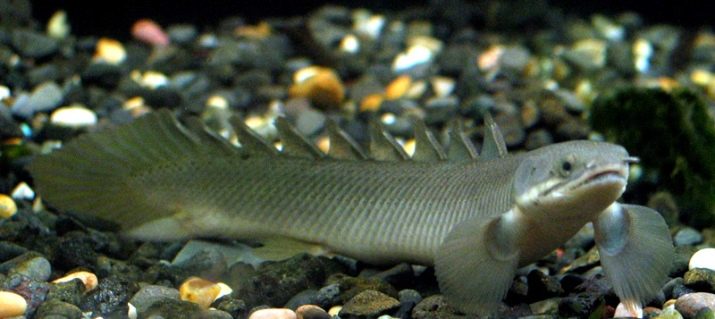
Peculiarities
Polypterus Senegalese is also called the Senegalese dragon or mnogoper. At first glance, you might think that this is an eel, but polypterus has nothing to do with it. It is a predator from the multi-feather family, from the multi-feather order, the ray-finned class. Scientists managed to find out that this fish was born at the end of the Mesozoic era. This species was first described by scientists in 1829.
It could not be attributed to any family known at that time due to its too strong difference from other fish species. Then a separate multi-tree family was created.
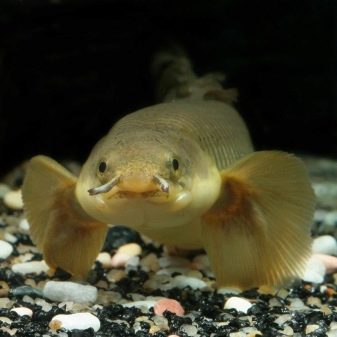
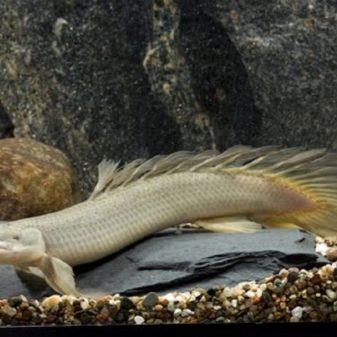
In appearance, the polypterus looks more like an ancient lizard than a familiar fish. It has the following characteristics:
- an elongated body, covered with strong rhomboid scales, rough to the touch;
- the body is silvery-gray with a greenish or bluish tint;
- near the dorsal fin, the color turns to olive, and the abdomen is white.
Young individuals have pale stripes along the body that disappear with age. The skeleton of a polypterus resembles the skeleton of a shark, consisting of cartilage. The head is similar to that of a snake, with extended nostrils. They are the main helpers in hunting, since the described fish has poor eyesight and is guided by smell. A large mouth with a huge number of sharp teeth helps to catch large prey.
The dorsal fin consists of individual ridges, similar to spines, of which there can be from 6 to 19 pieces. Because of this type of fin, it is called "dragon". This feature also influenced the fact thatolipteruses are called "mnogoper".
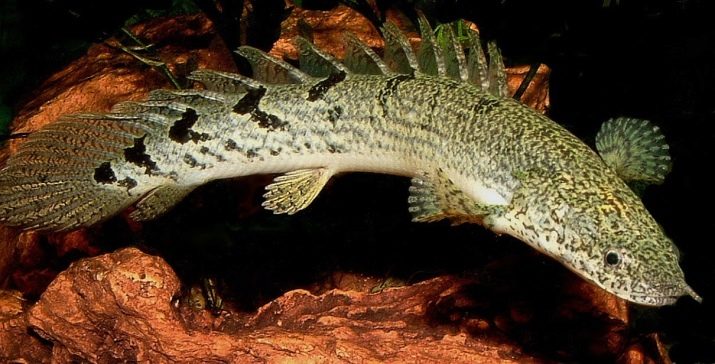
This is a large fish that grows in nature up to 70–90 cm. In an aquarium, individuals do not exceed 40 cm. The size of the pets depends on the volume of the aquarium. They have powerful, rounded pectoral fins located behind the head, allowing the polypterus to move dexterously not only in water, but also on land.
One of the interesting features of this fish is considered double breathing. The swimbladder is divided into 2 compartments, it began to work as a lung in polypters, which allows them to survive a drought while on land, burrowing in silt. Polypterus can live without water for a long time, it will die from drying out.
Often, getting out of the aquarium, the polypterus goes for a walk around the apartment. Dryness is not its environment, so the aquarium should be covered with a lid without gaps, but with oxygen access. A large pet will need a large "house".
One individual will need at least a 200 liter aquarium, and for a polypterus, it is not the volume that is more important, but the bottom area.
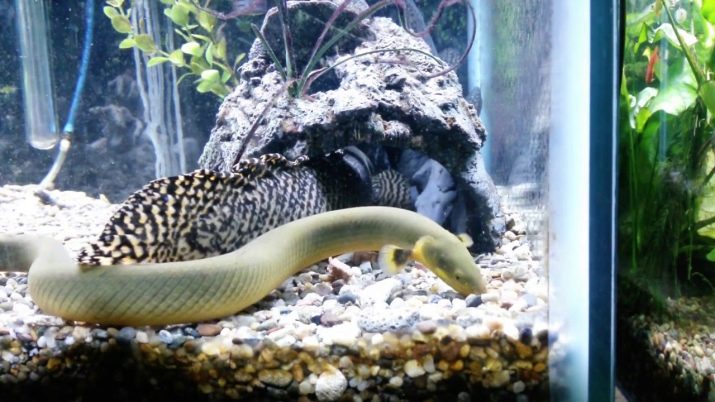
It is difficult to distinguish a female from a male. This is not feasible at a young age.... In an adult, the main differences are in the size of the anal fin - in males it is larger, thick and wide. In females, the head is slightly flattened. Albinos are also found among the Senegalese polypteruses. They can be recognized by their marbled white body coloration and red eyes. In feeding and keeping, they are no different from ordinary individuals.
Senegalese is not the only polypterus found in domestic waters. It is the simplest and not the largest, and therefore popular. It is easier to find in pet stores. The genus of polypters has more than 10 species and subspecies. In addition to the described species, there are the following:
- Nile;
- Congolese;
- guinean;
- dwarf;
- West African.
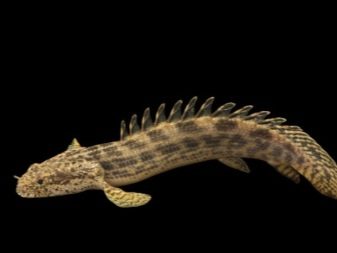
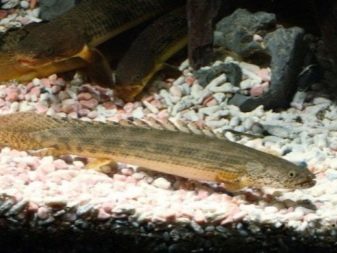
Young individuals lead a gregarious lifestyle, and over the years they choose loneliness and become territorial. This fish is able to recognize its owner, allows itself to be stroked and eats from the hands. Mnogopera can often be found in "show aquariums". The appearance of the dragon attracts the attention of not only children, but also adults. The behavior of this fish is very entertaining, so many videos with his participation are filmed. This predator quickly gets used to its owner and swims to meet him from the shelter.
At the beginning of the twentieth century, photographs of Senegalese polypters were sold for a lot of money.
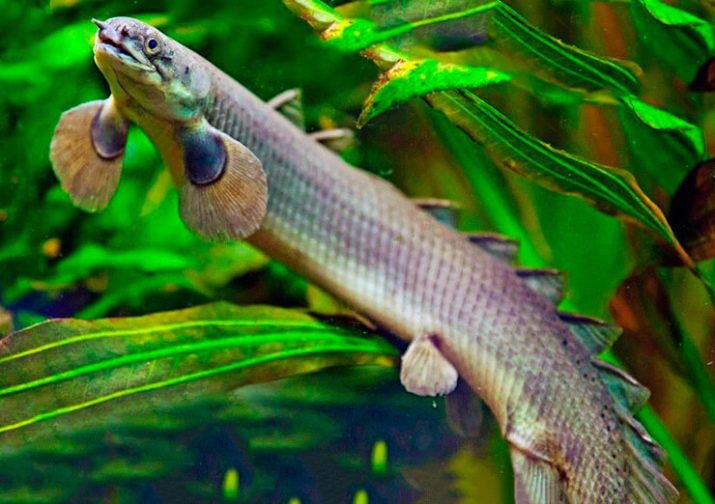
Living in nature
This "dinosaur" comes from the warm waters of Africa, where it lives in the Nile and Congo rivers, lakes Chad and Turkana. It can be found elsewhere in equatorial and western Africa.
Locals catch polypters even in road pits and various ditches, where the fish get into when rivers flood during the rainy season. This fish does not like strong currents and prefers to stay close to the coast, in thickets of plants and among snags, in which it is convenient to hide. This species began to be brought to Russia in the late 1990s, and to Europe several years earlier.
Compatibility
Compatibility with other fish will not be easy, since the polypterus eats absolutely everything. He will try to eat even what will not go into his mouth. Ideally the size of the neighboring fish should not be less than half of the polypterus itself. If the fish is smaller, then he will try to swallow it, therefore, large and fast individuals need to be added as neighbors, namely:
- astronotuses;
- non-territorial cichlids;
- labyrinth fish;
- large barbs;
- knife fish;
- snakeheads;
- giant gourami;
- synodontis;
- butterfly fish;
- akara;
- aperonotuses;
- macropods;
- Calabarian Kalamoicht.
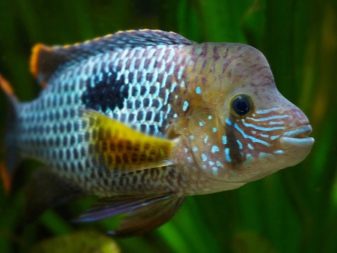
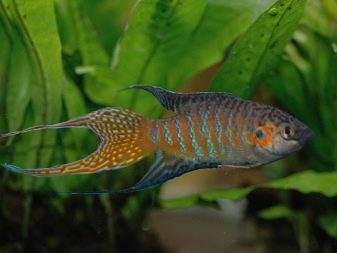
But polypterus is not the top of the food chain.... There are fish with which he is incompatible, while they can kill him. The described individual is slow, so it is incompatible with large piranhas. Although its diamond-shaped scales and strong, the abdomen is practically defenseless against these predators. In addition to the abdominal part, piranhas gnaw at its fins, which can also lead to the death of the polypterus. Apart from piranhas, it is not compatible with the following:
- sucking catfish;
- armored pike;
- small fish.
Growing conditions
As mentioned earlier, this fish will need an aquarium of at least 200 liters to live comfortably. It must be equipped with good filtration, not creating strong currents and aeration. The water temperature should be between +20 and +30 degrees. It is not difficult to keep this fish, it is suitable even for a beginner in aquarium hobby, since polypters are undemanding to water quality and feeding, but everything should be within reason.
Any soil will do, only without sharp edges - polypters like to dig it. We must not forget about the weekly change of 20% of water for fresh water, cleaning in the aquarium and the soil siphon.
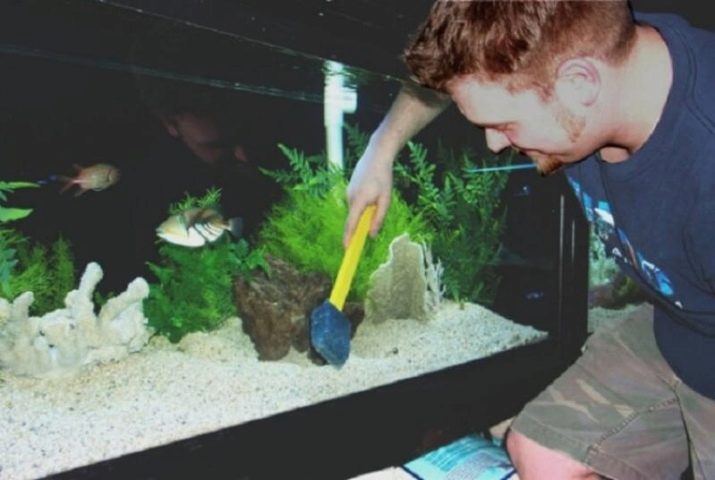
To simulate natural space, you will need thickets of plants, but it is better to plant them in pots... The presence of grottoes and various shelters will be gratefully accepted by the pet. The light for the described fish is not fundamental, but they prefer the twilight (if only the plants fit). Since the fish is nocturnal, it is better to feed it in the evening, shortly before the lights are turned off.
The aquarium must be equipped with a lid with tightly closed holes for hoses and wires, since this pet can even crawl into such a small gap and go for a "walk". A prerequisite for keeping this species is the presence of free space between the water surface and the lid. The fish sometimes floats up for a breath of fresh air. Under good conditions, this pet can live for more than 10 years.
Correct feeding
Although the polypterus is considered absolutely omnivorous, there is one very important detail in feeding - the fish often die from dry food. This is due to the peculiarity of their digestive system. Very small individuals or just purchased should be fed only with live food. Experimenting with dry food is likely to kill the fish. From live feed, the following are well suited:
- earthworms;
- shrimp, both live and frozen;
- small fish;
- squid;
- bloodworm.
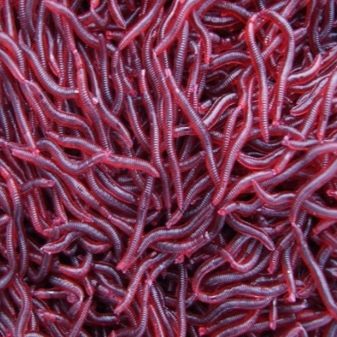
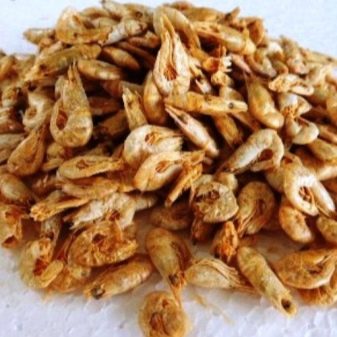
Important! Adult pets need to be fed no more than 2 times a week, otherwise obesity will begin, which will lead to lethargy and loss of interest in everything.
Reproduction
Breeding polypters in an aquarium is difficult. Although all individuals on sale are caught in the wild. Spawning of this specimen takes place at home during the rainy season - from May to October. To stimulate spawning, you can lower the water temperature by 3-4 degrees. The main difficulty here is the volume of the non-restorative. It should be less than 500 liters, and the bottom should be covered with Javanese moss. This is necessary to preserve the offspring - the parents eat the eggs.
Before spawning begins, the male will start courting the female by pinching her fins. At this time, the female's abdomen will inflate, and the male's anal fin swells. The fish will start rubbing against each other and spinning, after a while the female will start spawning. It will stick to the plants or sink to the bottom.
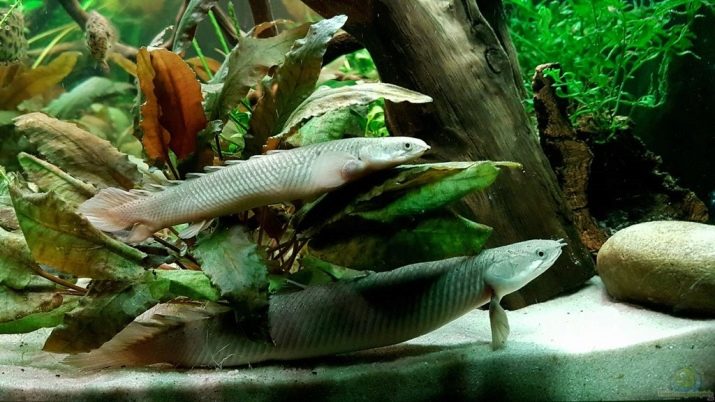
During one spawning, there can be from 400 to 4000 eggs. When the female has marked all the eggs, the parents must be removed from the aquarium or all the moss and eggs must be collected and transferred to another aquarium. Next, air purging and filtration comes into play. After 3 days, larvae with external gills will appear, which will disappear in a month. On day 8-9, they will start feeding on their own. We need a regular water change for fresh water from 20%.
The next difficulty is that the fry are aggressive and can eat smaller congeners, so sorting by size is necessary. After a month, the babies will grow up to 5 cm, then there is no need for sorting. At the same time, they will learn to swallow air from the surface and eat any food. As they grow, they need to be transferred to a larger aquarium for better growth.
All about Polypterus Senegalese, see below.








